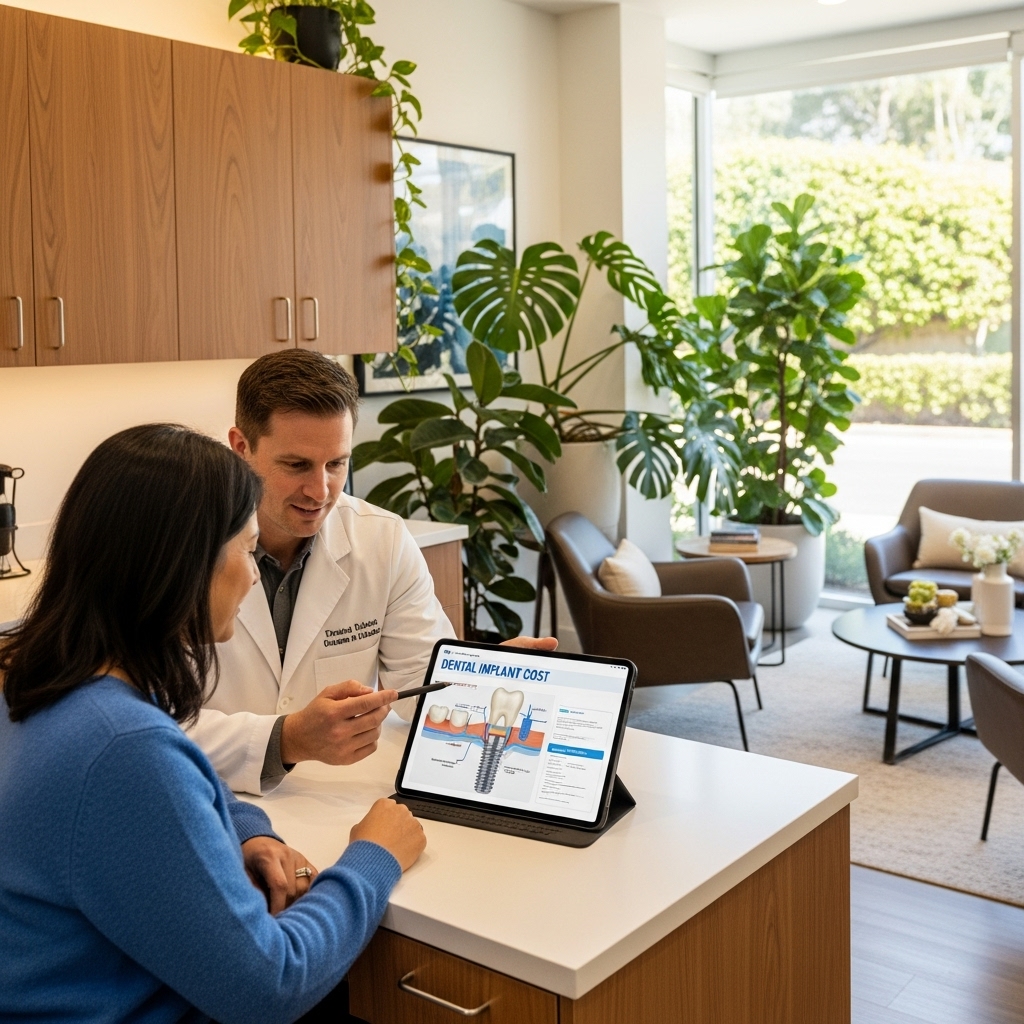Understanding How Dental Implant Cost Is Really Determined in Woodland Hills
Ask five neighbors in Woodland Hills what they paid for a dental implant and you are likely to hear five very different answers. That is not because anyone is hiding the ball; it is because no two mouths, no two treatment plans, and no two surgical situations are exactly alike. From the tree-lined streets near Ventura Boulevard to the hills that catch the evening breeze, our community is full of people who value quality care, long-term health, and a confident smile. When it comes to implants, the question is not merely how much, but what goes into that figure, why it varies, and how to make a thoughtful decision that serves you for years to come.
Let’s begin with a simple truth: an implant is not one thing. It is a coordinated series of steps that includes evaluation, planning, placement, healing, and restoration. If you are considering dental implants to replace one or more missing teeth, understanding these steps will help the overall picture make sense. In Woodland Hills, where many residents juggle busy commutes and active weekends at the Commons or along Mulholland, convenience and predictability also factor into how treatment is scheduled and delivered. Those human details matter just as much as the clinical ones.
Local Context: Why Woodland Hills Influences Your Plan
Choosing an implant practice close to home offers advantages you will feel at each visit. Pre-surgical assessments, follow-ups, and restorative appointments benefit from familiarity with local dental labs, imaging centers, and collaborating general dentists. A well-coordinated local team helps streamline your appointments and minimizes disruption to your work and family time. In practical terms, that means fewer surprises, clearer communication, and a smoother path from consultation to final crown or bridge.
The Woodland Hills patient community is diverse. Some patients come in with a single missing molar from an old extraction; others are navigating more complex needs after years of wear or gum concerns. That diversity shapes the scope of planning. A single implant in healthy bone is different from an implant that must be coordinated with grafting, a sinus lift, or the replacement of multiple teeth. The neighborhood you live in does not change your anatomy, but the clinical resources and expertise available nearby absolutely shape the experience.
Assessment and Planning: The Foundation of Predictability
A thorough evaluation is the first chapter in your implant story. This typically includes a health review, dental history, and advanced imaging. The goal is to map out bone quality and volume, identify nerves and sinus anatomy, and determine the best position for the implant. Digital planning tools allow your clinician to reverse-engineer the case from the final smile back to the implant site, helping ensure that the implant supports a natural-looking, durable restoration. In Woodland Hills, many clinicians collaborate closely with restorative dentists so the surgical plan aligns precisely with your final crown or bridge design.
Think of planning like charting a hiking route in Topanga. The more precise your map, the fewer surprises you encounter and the better the journey. When everything is aligned—from angulation to soft tissue support—the result not only looks like a real tooth, it behaves like one in everyday life.
Materials, Systems, and Why They Matter
Implants are crafted from biocompatible materials designed to integrate with bone and withstand the forces of chewing. Some systems have longer track records and specific design features that may suit certain cases. Your clinician’s familiarity with a system matters because it influences the nuances of placement, healing, and restoration. In addition, the abutments and crown materials selected for your bite, esthetics, and hygiene routine will shape how natural the tooth looks and how easy it is to clean. A strong collaboration with local dental labs helps tailor shade, contours, and bite for your smile, especially if the implant will be visible when you talk or laugh.
Technology also plays a role. Cone beam imaging, digital impressions, and surgical guides can add precision. That precision often translates into shorter appointments and more predictable healing. It is less about flash and more about fit—fit for your anatomy, your goals, and your long-term oral health.
The Role of Experience and Team Cohesion
In implant dentistry, the human factor is everything. The clinician’s training, the surgical assistant’s attention to detail, and the restorative dentist’s eye for esthetics all influence your outcome. In a community like Woodland Hills, where many practices have long-standing relationships with specialists and labs, that cohesion is a quiet superpower. Experience helps a team anticipate subtle variables—bone density, tissue biotype, bite dynamics—and adjust the plan to suit your case. When you meet your provider, ask how they collaborate with your general dentist and lab. Listen for answers that emphasize planning, communication, and follow-through.
Adjunct Procedures and Why They Are Sometimes Necessary
Not every implant requires additional procedures, but when they are appropriate, they support long-term success. Bone grafting helps where the jaw needs reinforcement. Sinus augmentation can create safe vertical space for implants in the upper back region. Soft tissue contouring can improve esthetics and hygiene. None of these steps are afterthoughts; they are integral tools that set the stage for a beautiful, durable restoration. Your clinician will explain whether these are part of your plan and why.
Surgical Approach and Comfort Considerations
The day of placement is typically uneventful, particularly with a well-mapped plan. Comfort options are customized to the patient, and the procedure itself is more controlled than many people expect. In Woodland Hills, it is common to see a blend of advanced planning and patient-centered comfort measures that make the experience feel smooth. After surgery, most patients are surprised by how manageable the recovery feels when they follow instructions and keep their follow-up appointments.
Healing Timelines and The Path to Your Final Tooth
Bone needs time to integrate with the implant surface, and soft tissues need time to mature. Your personal timeline may be straightforward or may include interim steps like a temporary tooth to maintain your smile during healing. You will be guided on home care, nutrition, and simple routines that support the implant as it integrates. In each follow-up, your clinician checks both hard and soft tissue stability. A successful implant is not judged by the day of placement but by how well it serves you months and years later.
Restorative Design: Crown, Bridge, or Beyond
When the implant is ready to restore, the restorative dentist creates the visible part of the tooth. For a single implant, that is typically a crown designed to blend seamlessly with its neighbors. For multiple missing teeth, a bridge or other solution may be considered. The shade match, surface texture, and contact points are fine-tuned to look like a natural part of your smile and to make daily hygiene intuitive. The closer the restorative plan aligns with your chewing patterns and speech, the more natural the implant will feel.
Insurance, Benefits, and Smart Conversations
Coverage for implant-related care varies widely, and the language can be confusing. The most useful approach is to focus on clarity: which portions of your plan may be eligible for benefits, which steps are considered medically necessary, and how appointments can be scheduled to coordinate with your benefits year. A good local office will help you understand your options and provide documentation for pre-authorization where appropriate. These conversations are not about rushing; they are about building a plan that fits your health goals and practical life.
Comparing Treatment Plans the Right Way
Patients sometimes feel overwhelmed when comparing two or three plans. The key is to look beyond headline phrasing and ask consistent questions: What steps are included in the plan? Which materials and technologies will be used and why? Who is performing each part of the treatment, and how do they coordinate with the lab? What is the provisional plan if something needs adjustment during healing? Evaluating apples-to-apples guards you from false assumptions and highlights the plan that best matches your priorities.
In the middle of that evaluation process, it helps to revisit your core goal: restoring function, comfort, and confidence. Your smile is with you on walks at Serrania Park and dinners on Ventura Boulevard. Choosing thoughtfully is worth the pause. If you are still clarifying the path, reading more about dental implants can anchor your decision-making in facts rather than guesswork.
Longevity, Maintenance, and Everyday Life
Implants are designed for the long haul, but like any part of your mouth, they rely on daily care and professional maintenance. Brushing, flossing, and routine cleanings keep the tissues healthy. If you grind your teeth or play sports, a protective appliance may be advised. Hygiene is not merely a checklist; it is the quiet ally that protects your investment of time and effort. Over the years, occasional adjustments help keep everything in harmony with your bite and gum health.
Questions Worth Asking During Your Consultation
It can be helpful to prepare a few questions before your appointment. Ask how many implant cases your provider completes in a typical month and what kinds of cases they see most often. Ask how they decide between different implant systems and when they choose to use a surgical guide. Ask how they coordinate with your general dentist and how they approach esthetics in the front of the mouth versus function in the back. The answers will give you confidence that the plan reflects your unique needs.
Setting Realistic Expectations
Most healthy patients are excellent candidates, and most implants succeed when planned and maintained thoughtfully. Still, it is important to acknowledge that biology can vary. Healing may take longer in some areas of the jaw or in patients with specific health considerations. Your clinician will outline what to expect at each step, and together you will build a plan that prioritizes safety, comfort, and results. Clear expectations reduce anxiety and help you enjoy the process of restoring your smile.
Frequently Asked Questions
How long does a dental implant take from start to finish?
Timelines vary depending on the health of your bone and gums, whether any adjunct procedures are part of your plan, and how your body heals. You will typically have a clear sequence outlined at your consultation, including when you can expect to receive your final crown.
Is the implant procedure painful?
Most patients are comfortable during the procedure thanks to modern techniques and thoughtful anesthesia options. Afterward, the majority report that recovery is more manageable than they anticipated, especially when they follow the specific home care instructions provided.
What makes one implant plan different from another?
Differences often come down to the complexity of the case, the need for grafting or tissue contouring, the type of implant system selected, and the level of technology used for planning and placement. The clinician’s experience and the quality of the lab work also play major roles.
Will the implant look natural?
With careful planning and collaboration between surgeon, restorative dentist, and dental lab, an implant-supported crown can blend so well that it is indistinguishable from your natural teeth. Shade, shape, and bite are all customized for your smile.
How do I care for my implant at home?
Daily brushing, interdental cleaning, and routine professional visits keep the tissues around your implant healthy. Your team may suggest specific tools to make home care easy and effective based on the location of your implant.
Can I get a second opinion?
Absolutely. A second opinion can offer clarity and peace of mind, particularly for complex cases or when comparing different approaches. A conscientious provider welcomes thoughtful questions and collaboration.
Take the Next Step
If you are ready to move from curiosity to a personalized plan, schedule a consultation with a local provider who values careful planning and open communication. A conversation tailored to your goals will help you decide whether now is the right time to move forward with dental implants. Your path to a confident, lasting smile can start with a single, well-informed visit.





